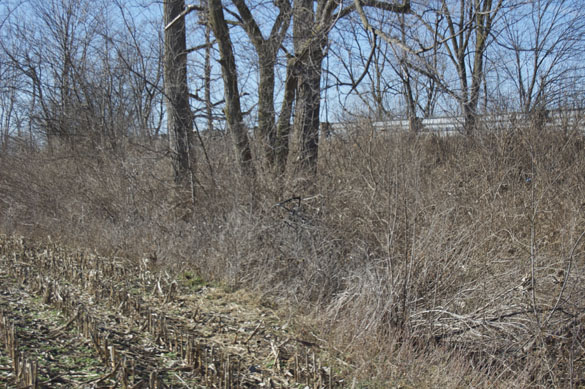My friend Trevor Marshall has been doing some wonderful tree modeling of late. He’s created some beautiful scenes that truly give a sense of place, rather than the generic look commonly seen on too many layouts. I’m happy to announce that he’s doing an article for volume 09 of The Missing Conversation. I’m looking forward to learning more about how he is using tree models on his layout.
Trevor and I agree that scenery is a subject worthy of careful study in its own right. We’re in the minority to be certain with this view, but so many concepts now taken for granted, such as realistic operations, started as a minority view that eventually gained broader acceptance.
Will we someday see prototypically accurate scenery that is a truer representation of real world locales become the norm? Perhaps but doubtful. The standard argument against such ideas defaults to something like this: It’s model railroading not model botany.
Hmmm…
At one time generic boxcars with generic details were good enough for most folks, now they’re not. At one time generic buildings like a certain plastic farmhouse, water tower and two-stall brick enginehouse showed up on layouts from sea to shining sea. While there are still plenty of ersatz structures around, now you’ll find a much greater selection of distinct architectural designs. Why, and who cared? I thought it was supposed to be model railroading, not model architecture?
What we’re coming to more deeply understand and appreciate is that there is more to this craft than just the trains. In this regard, the hobby continues to mature from it’s toy train characteristics into a fulfilling, life-long endeavor you can invest of yourself in.
In looking at real trees, one can find a number of details that will inform better modeling. Paying closer attention to overall shapes, bark texture and color all go far in giving state-of-the-art tree models a sense of the individual character seen in the full-size world. We’re also getting better at modeling trees to scale heights, by understanding how important the visual relationships seen outside are to recreating more convincing scenes in miniature. We haven’t quite reached the point of getting exact leaf forms yet, but with current technology, can accurate, true-to-scale maple, sycamore, beech or oak leaves be that farfetched? What about evergreen needles?
If this seems like a silly dream, I remind you that fifty-plus years ago controlling multiple trains on one track without block control was impossible until Astrac carrier control came along. Of course it had big clunky receivers that would barely fit in most HO locomotives. Oh, and it was limited to six channels if I recall and you could forget about sound effects. It was cutting edge though, right up there with lichen and green sawdust.
If you aren’t a fan of Trevor’s blog already (and most of you are) here’s a link.
Regards,
Mike


Thanks for the kind words, Mike!
I’m enjoying learning about trees and how to model them – and I look forward to sharing fresh observations (with new photos) with readers of the upcoming issue of The Missing Conversation.
One thing I’ve noticed since I’ve started really looking at trees is how effective they are at framing our view of the great outdoors. Without them – as on the wide Prairie – the horizon becomes so wide that the space is hard to focus on. With them – as I hope to show in my article – our eye can slide past them to focus on scenes that we want to highlight. I’ll be sure to include some examples of how to reward careful observation by layout visitors.
Cheers!
– Trevor @ Port Rowan in 1:64
Trevor,
You’re welcome. We’re all looking forward to learning more about your tree modeling.
Regards,
Mike